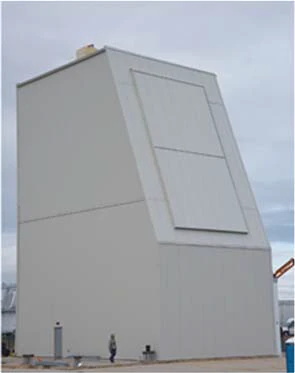Construction has been completed in Alaska, and testing of a new long-range radar is beginning, which can track both intercontinental ballistic missiles and hypersonic weapons, the Pentagon said.
“Construction of the early warning radar is complete, and we can now begin the testing phase (…). It will enable Northern Command to better defend the United States against ballistic and hypersonic missile threats,” said Vice Admiral John Hill, US Defense Missile Defense Agency Director.
The Pentagon said in the statement that once fully operational, the radar “will provide an unprecedented ability to simultaneously search and track multiple small targets, including all classes of ballistic missiles, at very long ranges.”

Long Range Discrimination Radar in Alaska
The Pentagon said that the construction of a powerful new-generation anti-missile defense radar for long-range detection of ballistic missiles LRDR (Long Range Discrimination Radar) has been completed in Alaska.
A ballistic target selection radar is deployed at ClearAFS in central Alaska. It will start operating later this year.
According to the US Missile Defense Agency (ABM), the radar can track ballistic targets at greater distances than before, accompanying missile flights from several directions and distinguishing between real warheads and decoys.
LRDR is integrated with the United States ground-based missile defense system Aegis (“Aegis”), armed with 44 long-range ground-based Standard Missile 3 interceptor missiles, capable of striking air targets at transatmospheric altitudes. Aegis systems are stationed at Fort Greeley, Alaska and Vandenberg, California. The number of ground interceptors is planned to increase to 64 units by 2023.
Washington has repeatedly stated that the US missile defense system is designed to protect the country from possible missile attacks from North Korea and does not pose a threat to the strategic nuclear forces of Russia and China.
